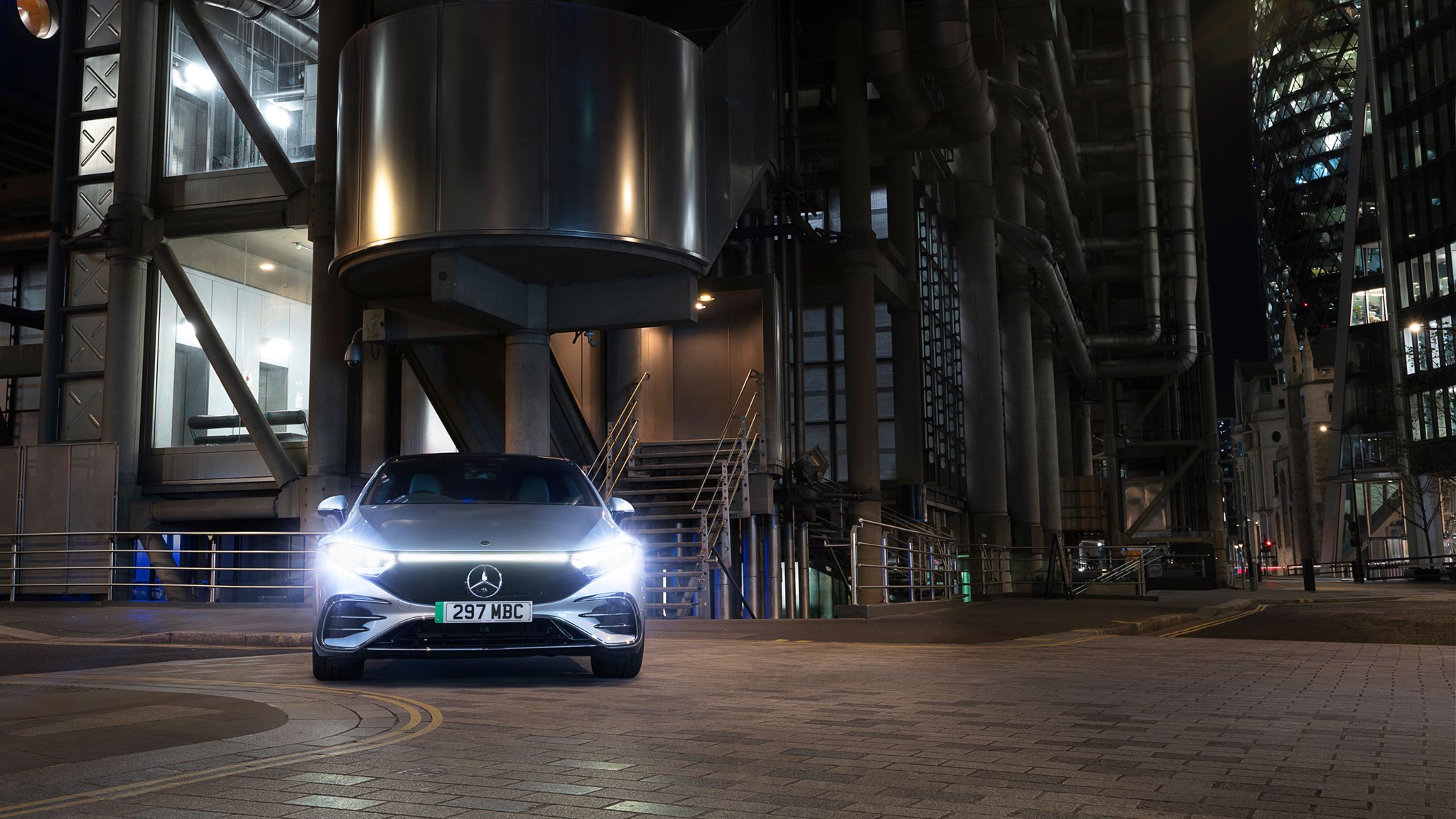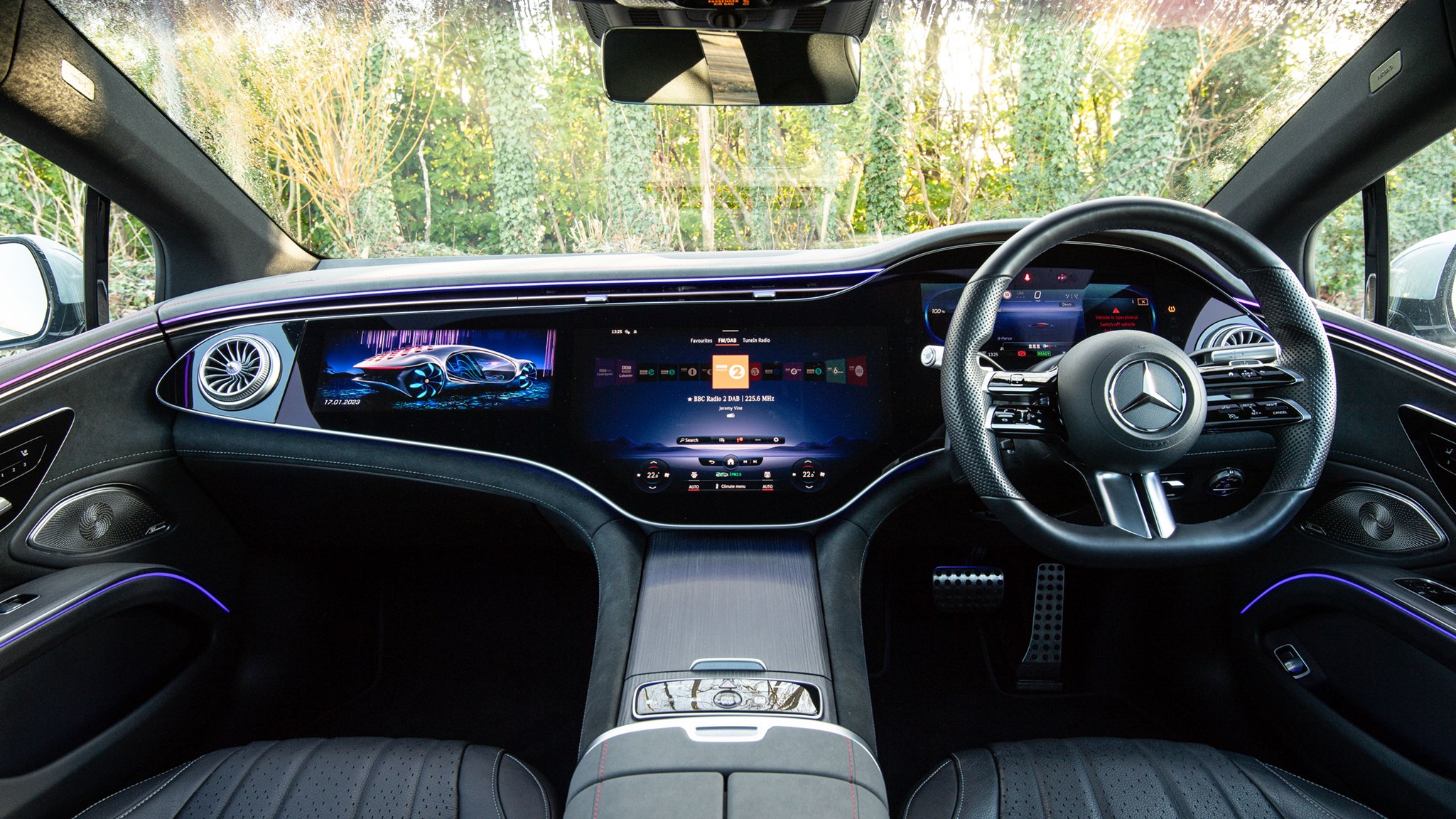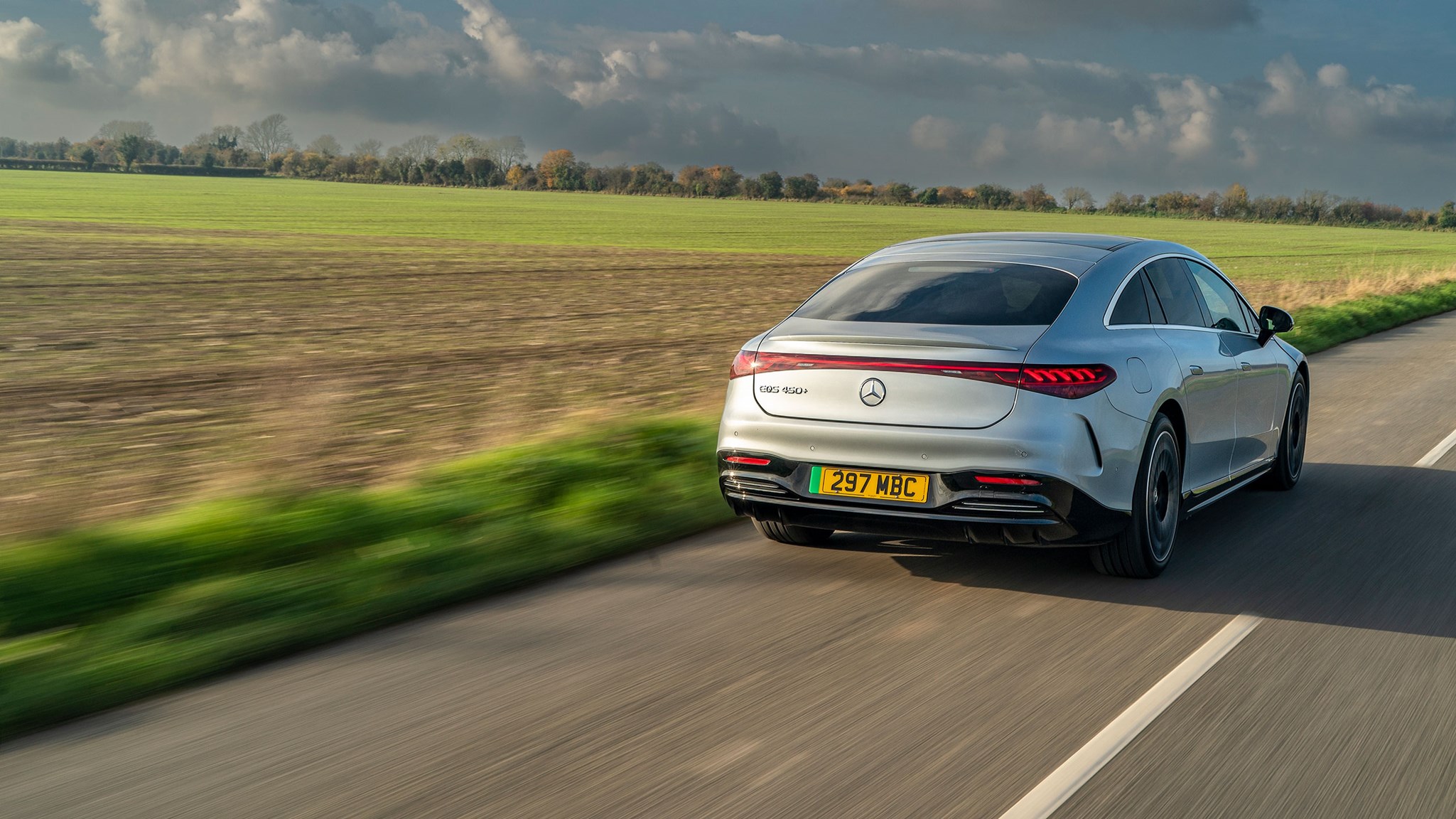► Merc’s flagship electric luxury car driven
► UK gets one version to start: EQS 450+
► Is it really the S-Class of EVs?
You already know the S-class; Mercedes’ flagship limousine, usually with a V12 or something similarly refined and huge under the bonnet. Now meet the EQS, an electric car that takes the same class and luxury, as well as the S – but replaces an internal combustion engine for electric power. Designed to sit atop Mercedes’ ever-increasing range of EQ electric cars, it’s Stuttgart’s ultimate expression of refinement; a luxury EV full of tech and not emissions.
We’ve driven the UK’s launch model, the EQS 450+, a rear-wheel drive, 5.2m-long behemoth with a battery pack as big as Sizewell B, a touchscreen twinned with an IMAX cinema and enough machine learning to worry Skynet. Read on to find out what the electric S-class is like.

A hatchback, but no A-class
It’s an unusual-looking car, the EQS five-door hatch. Featuring a stubby nose and rear sharply rising into the domed, elongated passenger cell in between, it’s designed with aero efficiency in mind. Mercedes claims its 0.20 drag efficient makes it the world’s most aerodynamic car. Divisive looks they may be, but they’re clearly working in the windtunnel.
The doors are equally unusual. Forget pop-out door handles, the EQS has pop-out doors. Approach and it swings open, and as you settle into the driver’s seat with its cotton-wool comfy head restraint, step on the brake and it closes again. No wonder this luxobarge claims up to 350 sensors, powering myriad features from congested highway autopilot to continuously calculating where to stop for energy.
There are pop-out handles too though; and thankfully they’re strong enough to overcome winter ice
Oh, and before you do get in the car – make sure it’s the the EQS you’re supposed to be driving and not someone else’s EQE. Mercedes has taken Russian Doll styling to its limit when it comes to these EQ saloons; you’d be forgiven for thinking the EQE is just an EQS – but a little further away.

Next you have to come to terms with… Hyperscreen (oh, to have been a fly on the wall in that naming meeting)! Fundamentally, this £8000 optional feature is a bank of conjoined screens almost 1.5 metres wide, with one for the passenger to watch movies or adjust car settings, a vast central touchscreen and the driver’s configurable digital binnacle. There’s a small control panel for stereo volume, dynamic mode and hazard warning in the centre console, but switches are at a premium and the old Merc touchpad or clickwheel are nowhere to be seen.
Mercedes’ electric plans explained
Gadget overload! Let’s get driving
I drove Mercedes’ first new-generation electric car, the EQC SUV, for nine months and the difference is remarkable. There’s now a choice of powertrain soundtracks – we opt for Silver Waves – and many lighting variations from the LED strip atop the dash. Accelerate hard and the lights glow red, accompanied by an unexpectedly bassy, burbling synthesised noise which makes a decent fist of echoing the ebb and flow of e-motor performance. I found it all great fun, but I accept that plenty of people will silence the lot.

Acceleration is Golf GTI brisk, so miles off the scenery-jumping capability of more outrageous Teslas. The EQS 450+ has a single motor on the rear axle, producing 325bhp –sufficient for a 0-62mph sprint in 6.2secs.
And you can carry a fair bit of speed into roundabouts and corners: the 450+ has good sticking power on the front-axle even with the Goodyear Eagle F1s gently squealing a little harmony with the Silver Waves soundtrack, under near 2.5-tonnes of car. In lower grip conditions, though, the EQS also did more than its fair share of drifting under acceleration – a remarkable party trick, though not one your important rear passengers will usually ask for.
Rides like a true Mercedes-Benz
The EQS is a big car, but it’s more agile than you expect thanks to rear-wheel steering. The standard car gets 4.5˚ of turn to boost stability at high speeds or corner at lower speeds, but our test car had the optional 10˚ pivot (which will be available as an over-the-air update, demonstrating how the EQS can roll out optional features).
You certainly notice it sharpen up the turning circle, making the genteel, lightweight steering feel faster than it is.

But the overwhelming EQS sensation is its barge-like ride. Like the S-class, it’s able to remove most bumps and potholes – but it does feel overall lumpier and a little busier than its ICE-powered cousin. That could be down to the sheer weight of EV batteries, something the BMW i7 seems to cope with significantly better.
Another dynamic drawback is occasionally squidgy, inconsistent brake pedal feel. Drive a bit less hurriedly than us and you won’t need them: tap the steering wheel paddle to engage ‘increased’ regenerative braking, and the car will automatically slow sharply when you lift. Or opt for ‘normal’ levels or no regeneration if that feels more natural.
How far does she go, mister?
Mercedes says the EQS packs its most energy-dense batteries to date, but the salient point is just how many: the stack’s capacity is an immense 107.8kWh. That’s almost 30Kwh bigger than the EQC’s.
That endows the EQS 450+ with a range of 484 miles on the WLTP test cycle. And on our brief test drive (in admittedly benign summer conditions), the trip computer recorded a consumption of 21.9kWh per 100km, not far off the official drain figure. On our mixed driving route with plenty of brisk acceleration runs, that’s about 3 miles per kWh – slightly better than the EQC managed on hypermiling runs.

The EQS’s standard AC charger can handle a 22kW wallbox (requiring triple-phase electricity supply) – it’ll take the equivalent of two nights’ sleep to recharge on a 7.4kW charger. Out and about, the EQS tops out with a 200kW DC charger: expect it to take 30 minutes to go from 10 per cent battery charge to full.

Any other novel features?
There are lots of novel features, enough for a book rather than a quick first drive review. The flap behind the front wheel gives access to top up fluids – the bonnet doesn’t open.
As with the S-class, Mercedes’ latest head-up display projects animated navigation arrows onto the road ahead, which dance along the intersection to show where to turn. And there are barmy Energizing Comfort moods: opt for Sea Breeze to hear whale music and watch waves crash across the Hyperscreen, while the seat massages your butt and air vents blow cold air.

The car’s operations are started with a pin code, and it’s linked to the Mercedes Me app on your smartphone. Store your preferences in a profile, even down to your height which helps the EQS set up your seating position, and these settings can be taken from Merc to Merc via the app. And no fiddling around with hidden switches for lumbar support: trace a line on a graphical representation of the seat to select how much bolstering you require.
You can establish different charging routines for different locations (such as at home or the office), and prime the cable to unlock at the end so other users can take over the juice. The air filtration system compares external pollution with the hermetically sealed, prodigiously spacious cabin: you’ll blanche as it tots up a decrepit van’s diesel particulates.
Finally and more prosaically, the Porsche Panamera-style hatchback boot swallows 610 litres of cargo, or 1770 with the rear seats folded.
Verdict
Mercedes’ first electric car to sit on bespoke EV architecture (the EQC was a Frankenstein of ICE platform with EV parts) the EQC is a significant step up, and represents the most luxurious EV Mercedes provide – well, until the slightly taller EQS SUV hits UK roads. Full of technology, more so than the standard S-class, and with a strong range and good EV-esque acceleration, it’s pretty much everything you’d expect from an electric S-class.
There are just two problems: Firstly, the ICE-powered S-class simply offers more refinement and a better ride than the EQS, making this car a little busier, a little more thrown together and significantly less special. The EQS’ other problem comes not from Stuttgart, but from Munich. Simply put, the BMW i7 does everything the EQS but better. In this new electric world, the EQS is no longer top dog.

Read more Mercedes reviews here